What’s Budding

What’s Budding
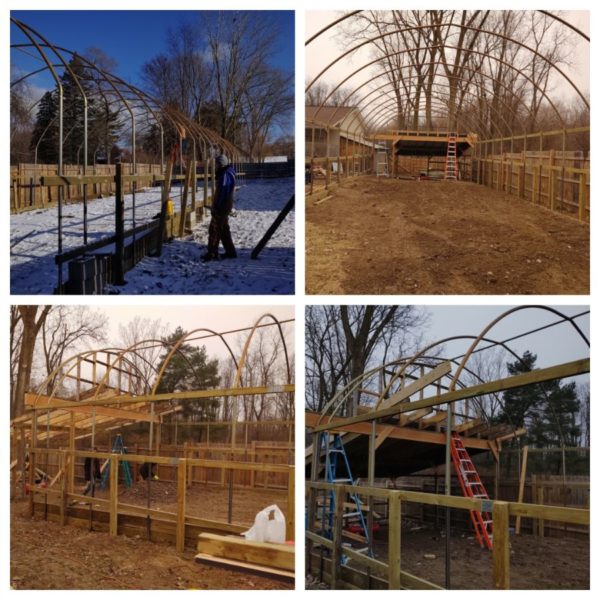
Why a Greenhouse?
Why did we need a greenhouse? Al and I have both been fortunate to work in greenhouse environments in the past, as have several members of our team. We have wanted to add a greenhouse space for some time. Both glass and poly houses provide access to natural light, allowing the growth or maintenance of plants requiring high light intensities.
It is not our intention to produce retail bedding plants for sale to the public. We will bring specialty tropical plants from Florida for use in our summer outdoor color plantings, and be able to ship those plants much earlier in the season, when availabilities are broadest. We will be able to pot up combinations earlier, getting some growth before moving plants outside. We will also be able to extend the season in the fall, keeping our Palms and Ficus outside longer.
We will be able to try new plant varieties with greater success, and do more custom work for special events in both indoor Tropicals and outdoor color plantings.
Having an additional heated space will give us an additional work and meeting space as well, allowing larger Make and Take classes, and networking events for larger groups, when gathering is safe again.
We look forward to extending our capabilities of service for our many clients. Feel free to reach out in the fall to arrange a tour for your group or organization.
On the Green Side
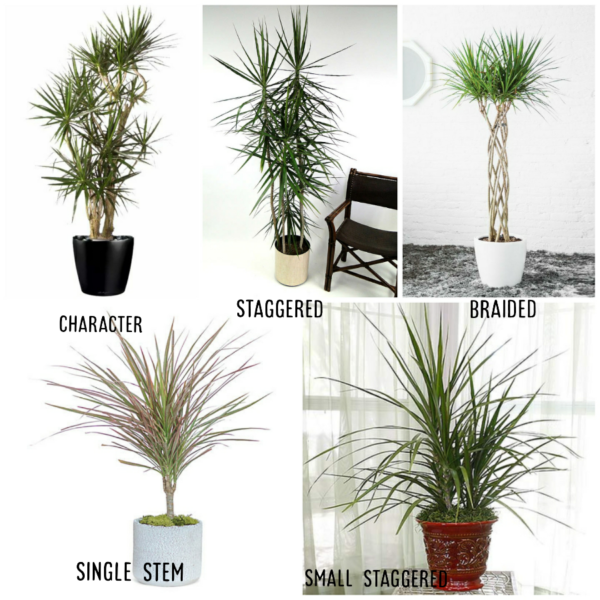
Dracaena Marginata
Sometimes called Dragon tree, or Spanish Dagger. Dracaena marginata is an excellent, easy-care interior plant. Native to Madagascar, this plant grows in various forms. Sizes range from a small plant in a dish garden to 15′ tall specimens. They are grown as single-stemmed, staggered in height groups, specimen plants with character, or even braided trunks. Marginata’s have narrow sword-like leaves that are shiny and arching and rounded grey stems.
Draceana Marginata like to be placed in bright indirect light. Plants will tolerate shadier locations, but their leaves may lose some of their bright color. This plant is easy to over-water. Soft brown tips are often a sign of overwatering. Yellow leaves can mean the plant needs more water.
NASA performed a Clean Air Study in association with the Associated Landscape Contractors of America. This study showed that Draceana Marginata was one of the plants effective in removing chemical pollutants from the air, such as benzene, formaldehyde, trichloroethylene, and ammonia.
While this beautiful plant is not poisonous to humans, it is highly toxic to cats and dogs, so be thoughtful where you place them.
Digging In
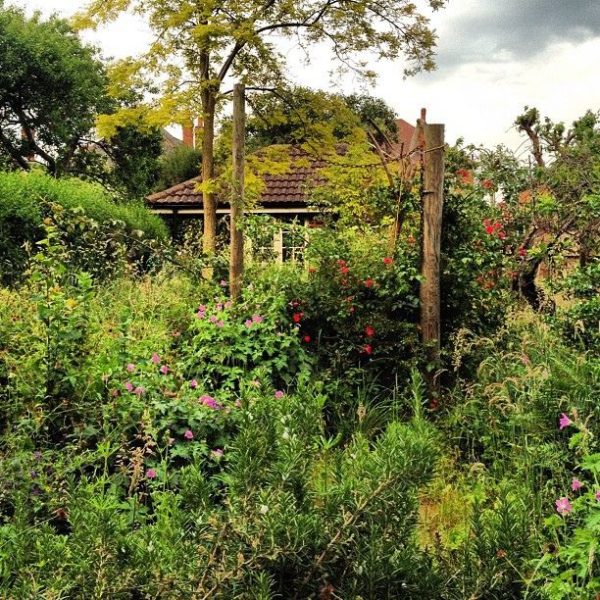
How to Rejuvenate Your Garden
When the landscape around the house or place of business has gotten weedy and overgrown, it’s time to take back control of the garden. While it may seem daunting, take it one step at a time, and you will be amazed as the landscape beds transform.
When tackling an overgrown garden, I start by carefully inspecting the existing plant material. I decide which plants can stay as they are, and those that need to be moved, pruned, divided, or removed.
Because most plant material is small and immature when planted, it is very easy to plant them too close to each other or to buildings. Remember to be patient. I like to tell our clients that their landscape will look good when newly-planted and great in three years. If they don’t want to wait that long, we can source larger plant material, or annuals planted between landscape plants will give a bright visual appeal and fill in those spaces temporarily.
Moving shrubs can be tricky or (depending on the size and species of the plant), impossible. If the plant needs to be moved, the optimum time is during the dormant season from late October to mid-March. Keep in mind that transplanting a small tree or shrub may affect the bloom of flowering plants for the next one to two years.
When possible, remove one-third of the plant’s foliage or branches before moving. With less plant structure to support, the plant can put its energy into re-growing the root system. Remove the plant from the current location very carefully, making sure to dig deep and wide to get as much of the root system as possible. The more soil taken around the roots, the fewer feeder roots get broken. Be sure to dig the new planting hole to the same depth as the plant’s rootball, and twice as wide. I like to mix the native soil with quality compost for backfill. Firmly tamp down the backfill around the newly-planted specimen to remove any air pockets that will dry out the roots. Water thoroughly and deeply immediately after planting, and keep the soil moist for three to four weeks.
Proper pruning helps to maintain plant health, control or shape plant growth, and stimulate growth and flower production. Pruning is best done while dormant- at this time you can see the exact shape of the branch structure, and pests and diseases are also dormant. When shrubs become leggy and unattractive, many can be rejuvenated by pruning.
There are two methods we recommend. The three-year method is where one-third of the plant stems are removed at the ground level the first year. In the second year, half of the remaining old stems are removed at ground level, along with some of the new growth from the year before. Keep the vigorous and well-spaced growth. In the third year, remove the last of the old wood with additional thinning of new shoots. This method is great for overgrown dogwood, lilac, hydrangea, honeysuckle, weigela, burning bush, cotoneaster, and viburnum.
The second method is a hard cutback, done preferably in March or April. Remove all the stems to four to six inches from the ground. This severe pruning induces large numbers of shoots to develop. Select and retain healthy shoots to encourage even branching. Plants that respond well to this method are dogwood, spirea, potentilla, honeysuckle, lilac, forsythia, and weigela.
Some shrubs that are overgrown and unattractive will have to be removed, and something else planted. Not all plants are able to initiate new growth if cut back to bare branches, such as most evergreens.
Perennials may need to be divided due to an ever-widening clump of growth that has gotten too large, plants have gotten floppy and may need to be staked, the blooms have decreased in size and quantity, or the center of the plant has died out. Many herbaceous perennials decline after 4-5 years without division.
Dividing perennials helps the plants perform better. Many perennials send new shoots up around the original plant, and over time, the roots and shoots crowd each other. Competition for light water and nutrients weakens the overall health of the plant.
As a general rule of thumb, perennials that flower in the spring should be split in the fall, and perennials that flower in the fall should be split in the spring. It is best done on an overcast day after the garden has been adequately watered the day before. While spring or fall is best, I have found that as long as they get adequate water, I can successfully divide perennials in the heart of summer when needed.
When dividing, the rootball should not be exposed for longer than necessary. Either cover with a tarp or plant into a temporary pot. (You can visit our pot exchange to get empty grow pots). Keep plants well-watered. Some perennials won’t need to be entirely lifted from the ground to be divided. With a flat shovel, chop off a portion of the plant and lift it out, leaving the rest remaining in the soil.
Weeding is usually the least desired job of landscape maintenance. It can be very time-consuming and labor-intensive. In the height of the growing season, if weeding isn’t kept on a schedule, weeds can grow big and strong in a very short time. If weeds start to tower over the rest of the plants, you’ll have a tougher time removing them than when they were small and their roots weaker. When eliminating weeds, it is important to remove or kill the root system, either by manually pulling up the complete plant or by spraying with a non-selective herbicide.
You don’t have to kill or pull weeds if they don’t grow in the first place, so consider a pre-emergent to keep weed seeds from germinating. Sprinkle a granular pre-emergent herbicide on the soil, then water. A single application will last up to 12 weeks. Note that once a per-emergent is in the soil, beneficial seeds won’t sprout either, and pre-emergent won’t kill plants that are already growing.
Once the plants have been pruned, moved, divided, or removed, add additional compost one-inch thick, to help maintain healthy soil.
Adding edging to the garden gives the beds a crisp, neat edge that helps to keep the mulch contained and the grass out. I highly recommend using aluminum edging versus black plastic edging. Plastic edging tends to heave in the soil over winter, and lawnmowers often crack and destroy the top edge. The aluminum edging that we use comes in bronze, black, or silver, is very durable and stays in place.
The last, but very important step to garden rejuvenation, is mulch. Mulch suppresses weeds, regulates the soil temperature, retains moisture, and gives the beds a tidy look. Cover the beds with three inches of mulch, leaving a little space around the crowns of the plants. Mounding mulch against the trunks or crowns can lead to rot, disease, and insect problems.
Garden rejuvenation can seem overwhelming when the landscape hasn’t properly been maintained but can be done by breaking it into small steps, or by calling a professional to whip it into shape. The Plant Professionals take a lot of pride in transforming gardens from a list of daunting tasks to a landscape the homeowner can be proud of. A garden that needs one or two shrubs pruned and some light weeding might be easily done by the homeowner. It is another story if there are over a dozen shrubs and trees that need to be pruned. There are some labor-intensive jobs where it is best to call for professional help. Dividing ornamental grasses can be quite a job. I remember the first time I attempted to divide a large miscanthus grass that I had in my garden. The center was starting to die out so I knew it was time. I managed to break five shovels on that single clump of grass before my husband took pity on me and our wallet and he got out his ax! The Plant Professionals have many customers that just need some occasional help getting the landscape in an aesthetically-pleasing condition that is easy to care for. For other clients, we can provide long-term maintenance, and build lasting business relationships. We also love maintaining garden beds and building relationships with our customers. If you think a regular garden maintenance program can save you time and stress, we welcome your call.

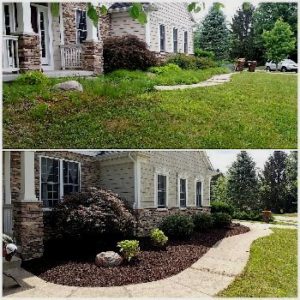
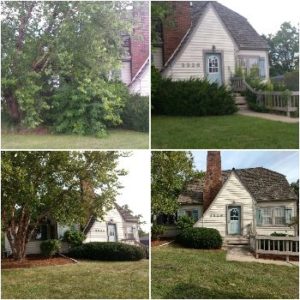
In this set of pictures you can see what a difference a garden restoration can make. For the top set pictures, you can see that we weeded the beds, pruned and shaped the shrubs, and added a thick layer of mulch.
In the bottom set of pictures, we trimmed the large tree that was blocking the window, removed the weeds, pruned and shaped the shrubs, and added a thick layer of mulch.
The Buzz
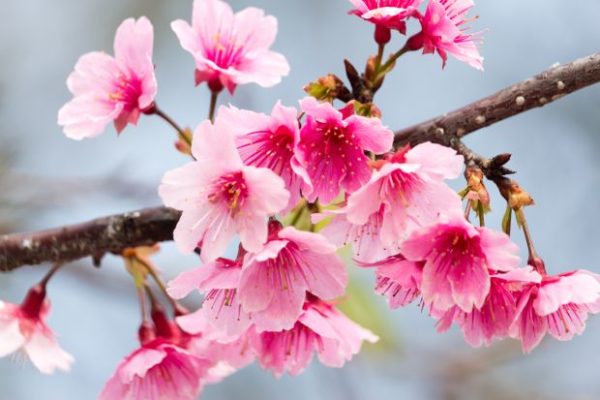
Spring Clean-up
Spring is here and it’s time to think about preparing the landscape beds for the growing season. Improve the appearance of your yard and bring tidiness to your views after a long winter. Your yard should be a source of pride and enjoyment.
Contact us for a quote on a spring clean-up. We can start your garden beds off right for a beautiful season
Don’t Forget Mother’s Day May 10th!
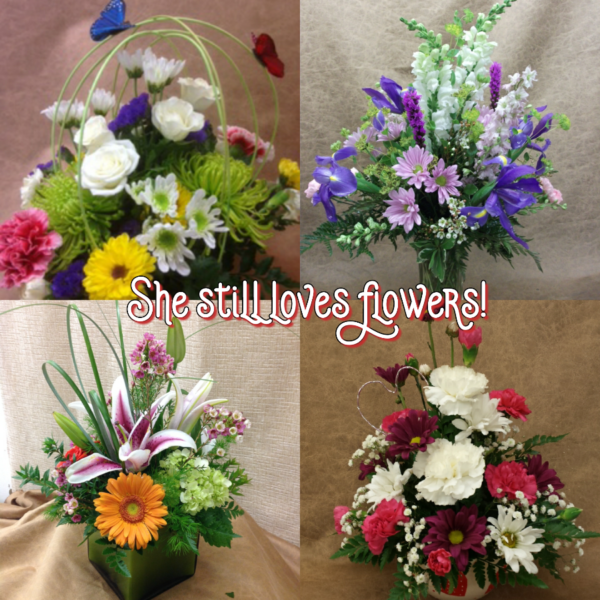
Curbside pick-up by appointment or contactless delivery in the greater Lansing area, including DeWitt, St Johns, Grand Ledge, Charlotte, and Mason
Call 517-327-1059 between 8 am-2 pm Monday-Friday to place your order.
Copyright © The Plant Professionals